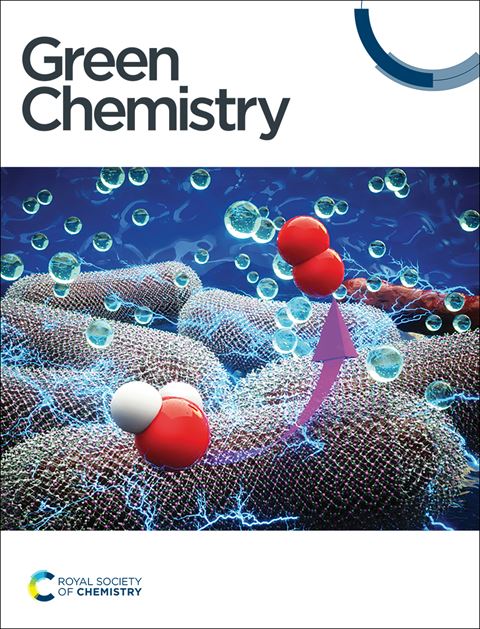A fundamental study of lignin reactions with formaldehyde and glyoxal†
IF 9.3
1区 化学
Q1 CHEMISTRY, MULTIDISCIPLINARY
引用次数: 0
Abstract
This study investigates the synthesis and characterization of lignin-formaldehyde (LF) and fully biobased lignin-glyoxal (LG) resins as alternatives to the phenol-formaldehyde (PF) adhesive currently used in the manufacturing of plywood and oriented strand boards (OSB). In this process, phenol was entirely replaced by a commercially available kraft-softwood lignin, while formaldehyde was substituted with glyoxal (a biobased dialdehyde) in the LG resins. Additionally, lignin monomers were used as model compounds to better understand the behavior of lignin in LF and LG resins. The reactions of phenol, lignin monomers, and commercial lignin with formaldehyde and glyoxal were investigated through Fourier transform infrared (FT-IR) and nuclear magnetic resonance (NMR) spectroscopy in both solution and solid states. The results confirmed the successful integration of formaldehyde and glyoxal into phenolic structures, leading to the formation of methylene and glyoxylene linkages during resin synthesis. This process created a robust three-dimensional network, as evidenced by 2D 13C–13C correlation solid-state NMR spectra and FT-IR analyses, which are crucial in studying the structural properties of the cured thermoset solid resins that are insoluble in NMR solvents. These findings highlight the innovative potential of lignin as a renewable alternative to petroleum-based phenol and emphasize the practical applications of a fully biobased lignin-glyoxal adhesive in the production of greener, more sustainable, and formaldehyde-free plywood and OSB wood panels commonly used in building construction.

求助全文
约1分钟内获得全文
求助全文
来源期刊

Green Chemistry
化学-化学综合
CiteScore
16.10
自引率
7.10%
发文量
677
审稿时长
1.4 months
期刊介绍:
Green Chemistry is a journal that provides a unique forum for the publication of innovative research on the development of alternative green and sustainable technologies. The scope of Green Chemistry is based on the definition proposed by Anastas and Warner (Green Chemistry: Theory and Practice, P T Anastas and J C Warner, Oxford University Press, Oxford, 1998), which defines green chemistry as the utilisation of a set of principles that reduces or eliminates the use or generation of hazardous substances in the design, manufacture and application of chemical products. Green Chemistry aims to reduce the environmental impact of the chemical enterprise by developing a technology base that is inherently non-toxic to living things and the environment. The journal welcomes submissions on all aspects of research relating to this endeavor and publishes original and significant cutting-edge research that is likely to be of wide general appeal. For a work to be published, it must present a significant advance in green chemistry, including a comparison with existing methods and a demonstration of advantages over those methods.
 求助内容:
求助内容: 应助结果提醒方式:
应助结果提醒方式:


